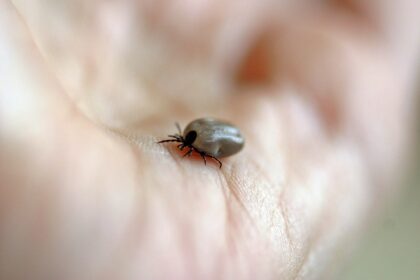 Now the time has come again when the ticks wake up from hibernation and look for blood victims. Dogs are also among their coveted victims. So it’s important to think about it. Most dog owners have found ticks on their dog. This is usually removed without looking further. But there are also dangerous creatures of this variety. In fact, there are 20 species of ticks in Europe. But only three are dangerous to dogs. The so-called common wood tick is the most common type of tick here with us.
Now the time has come again when the ticks wake up from hibernation and look for blood victims. Dogs are also among their coveted victims. So it’s important to think about it. Most dog owners have found ticks on their dog. This is usually removed without looking further. But there are also dangerous creatures of this variety. In fact, there are 20 species of ticks in Europe. But only three are dangerous to dogs. The so-called common wood tick is the most common type of tick here with us.
Communicable diseases
One of the most common diseases that ticks can transmit to dogs and humans is Lyme disease. Typical of such a disease in dogs is lameness due to joint inflammation. In people who contract Lyme disease, this can be seen from a reddening of the skin, which also occurs in dogs but cannot be seen through the fur.
Which ticks are active when?
Tick season is often mentioned, but this varies from species to species. The period between March and November, and May and October in particular, applies to the wooden goat. Ticks do not often attack in winter. However, they are still active up to seven degrees. This is especially true of the spotted tick, which is also active on frosty days. So, as a dog owner, you should also be careful in winter. This also applies to the brown dog tick. This is often brought from warm holiday regions. It can multiply in apartments and kennels all year round.
What to do if the dog has a tick?
It is important, if it already happens, to remove the tick quickly. Because with most pathogens, it is only critical after six days whether the blood has been transferred to the dog.
How do you remove a tick? There are also tips: Only remove with a suitable instrument, preferably with tick tweezers. Never use your fingers! Then hold the tick close to the skin. Pull slowly and evenly away from the stitch site. Do not twist, tear or crush! It is important to remove the tick correctly, otherwise there may be an increased risk of transmission. It is often not possible to say exactly when the tick infested the dog. So it’s best to check as often as possible.
How can you protect your dog?
There are two important aspects mentioned by the medical specialists: First of all, as I said, look for ticks after every time you are outdoors. Even in dense fur, they are easy to overlook. Then prevention, with antiparasitics. These protect the dog for a certain period of time, then the application must be repeated. This prevents the tick from attaching itself or dying shortly after being sucked in. It is very important to use the remedy correctly. Appropriate protection is also essential when traveling to risk areas.

Every day we experience the wonders of nature with our dogs. This inspiration is the basis for our lives and our products. In our magazine we share with you our passion for these wonderful animals. Visit our socials and become part of the DOG FIT community.


Leave a Reply